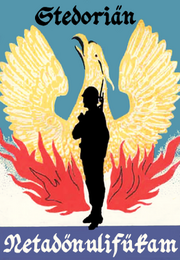Stedoria: Difference between revisions
No edit summary |
No edit summary |
||
| Line 18: | Line 18: | ||
|national_motto = "''Binos gität obsik me tikäl''" | |national_motto = "''Binos gität obsik me tikäl''" | ||
|englishmotto = "It is our right by reason" | |englishmotto = "It is our right by reason" | ||
|national_anthem = ''[[Repüblikahüm]]''<small><br/>"Republican Hymn"</small><br/>[[File:MediaPlayer.png|link=https://www.youtube.com/watch?v= | |national_anthem = ''[[Repüblikahüm]]''<small><br/>"Republican Hymn"</small><br/>[[File:MediaPlayer.png|link=https://www.youtube.com/watch?v=KeSYVer63iI]] | ||
---- | ---- | ||
'''Marches:''' <br/>''[[Hüm Proklamata Repüblika]]'' <small><br/>"Hymn of the Proclamation of the Republic"</small><br/>[[File:MediaPlayer.png|link=https://youtube.com/watch?v=KnzLrz1kKdc]]<br/>''[[Maleküm Lestäna Netik Stedoriäna]]'' <small><br/>"March of the National Standard of Stedoria "</small><br/>[[File:MediaPlayer.png|link=https://www.youtube.com/watch?v=PUl49iVeCtQ]] | '''Marches:''' <br/>''[[Hüm Proklamata Repüblika]]'' <small><br/>"Hymn of the Proclamation of the Republic"</small><br/>[[File:MediaPlayer.png|link=https://youtube.com/watch?v=KnzLrz1kKdc]]<br/>''[[Maleküm Lestäna Netik Stedoriäna]]'' <small><br/>"March of the National Standard of Stedoria "</small><br/>[[File:MediaPlayer.png|link=https://www.youtube.com/watch?v=PUl49iVeCtQ]] | ||
Revision as of 16:10, 12 April 2023
This article is incomplete because it is pending further input from participants, or it is a work-in-progress by one author. Please comment on this article's talk page to share your input, comments and questions. Note: To contribute to this article, you may need to seek help from the author(s) of this page. |
Stedorian People's Republic | |
|---|---|
| Motto: "Binos gität obsik me tikäl" "It is our right by reason" | |
| Anthem: Repüblikahüm "Republican Hymn" Marches: Hüm Proklamata Repüblika "Hymn of the Proclamation of the Republic" Maleküm Lestäna Netik Stedoriäna "March of the National Standard of Stedoria " | |
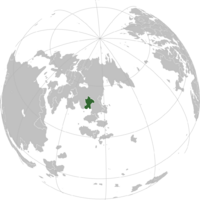 | |
| Capital and | Kapojvar |
| Official languages | Stedorian, Paysan |
Recognised minority languages | Dolch, Gadutean Low Dolch, Paysan-Dolch, |
| Ethnic groups | 79% Stedorians 12% Paysans 4% Dolch 5% Others |
| Religion | Tikälima (official) |
| Demonym(s) | Stedorian |
| Government | Federal revolutionary dominant-party assembly-independent republic under an anocracy |
• Chief Consul | Tamäj Köseg |
• Second Consul | Djjuràd-Françwa Delvau |
• Chief Tribunal President | Tilmen Kasedadüf |
| Legislature | National Assembly of Popular Power |
| Establishment | |
• Establishment of the Kelvön Dynasty | 1568 |
| August 19, 1793 | |
• Kelvön Dynasty re-established | November 14, 1801 |
| October 3, 1971 | |
• Monarchy re-established | March 13, 1986 |
• Monarchy overthrown | December 13, 2009 |
• People's Republic established | August 5, 2010 |
| Area | |
• | 296,300 km2 (114,400 sq mi) |
| Population | |
• 2023 estimate | 19,007,958 |
• 2021 census | 18,727,052 |
• Density | 38.23/km2 (99.0/sq mi) |
| GDP (nominal) | 2023 estimate |
• Total | $269.66 billion |
• Per capita | $14,399 |
| Gini (2020) | low |
| HDI | medium |
| Currency | Stedorian mark (Ḿ) (STM) |
| Time zone | UTC+0 (UTC) |
| Date format | dd.mm.yyyy CE |
| Driving side | right |
| Calling code | +772 |
| Internet TLD | .sd |
Stedoria, officially the Stedorian People's Republic (Stedorian: Pöparepüblik Stedoriänik), (Paysan: Èpüblik Pöplèr Stedòrik), (Dolch: Stedorianische Volksrepublik), is country located in southeastern Argis. Its neighbours are Thransaltz to the north, Velaheria and Delamaria to the east, Dolchland to the south, and Walneria and Sawbrania to the west. Stedoria is divided into 6 states, and 1 autonomous republic, all of which have their own governing bodies. The population of 18.7 million Stedorians are largely of the Dolch Stedorian ethnic group, with a sizeable amount of the population belonging to the Paysan ethnic group.
Early history
Middle history
Stedoria, following a second turbulent revolution that led to the deposition of the monarchy and the establishment of a republic, has led to significant economic turmoil, though in recent years the Stedorian economy has slowly started to recover. Stedoria is a federal revolutionary dominant-party assembly-independent republic, with its government divided into three separate branches of government and a unicameral legislature. Officially a republic since the Second Stedorian Revolution in 2009 toppled the monarchy, monarchist rebels claiming to be Stedoria's legitimate government are still fighting government forces in certain provinces of the country in the Internal conflict in Stedoria. Thousands of people, both military and civilian, have been killed or wounded in the conflict; international observers have implicated both sides in a number of war crimes, particularly extrajudicial killings and summary executions, which both sides deny. Both the Stedorian government and the the monarchist Royal Stedorian Front of Monarchist Resistance have explicitly rejected any sort of ceasefire or peace negotiations; many experts see it highly likely that the conflict has no near end in sight.
Following the revolution, significant democratic reforms were impletemented by the country's transitional administration. The new republic's first elections were held in 2010, with the newly-formed National Party of the Stedorian Revolution, a party aligned with the Dolchic Socialist Gemotam Party, achieving victory; the elections were deemed by international observers as free, fair, and democratic. Since the country's first free and fair elections however, the country has experienced significant and severe democratic backsliding. Although elections are still held, many international experts believe them to be unfair and undemocratic. Many political experts claim Stedoria to be a hybrid regime, with the nation's political institutions heavily dominated by the National Party of the Stedorian Revolution and its international affiliate, the Dolchic Socialist Gemotam Party.
History
Prehistory
(WIP; Describe the first people. Where did they come from? How did live? What did they eat and do? Which remains were found?)
Early History
(WIP. History begins with the first written records. What's in those records? Who is mentioned? Did the country have a different name at that time?)
Kaotatimät
(WIP. Time of Chaos, circa 700, when Stedorian principality broke up.)
Kofedatimät
(WIP. Confederacy period, circa 1130 CE, when Stedoria was organised into a loose confederacy. Who were the rulers? How did they come to power?)
Rise of the Kelvön Dynasty
(WIP. Establishment of the Kelvön Dynasty in 1568.)
Failed Colony and Isolationism
(WIP. Who was the coloniser? Why did they invade? Why did this invasion fail? Why was this followed by a period of isolationism?)
First Revolution
(WIP. First republic established on 19 August 1793. How did the country go from isolationism to revolution? Who were the revolutionaries? Who/what caused them to revolt?) After around thirty years of controlling the Stedorian colony on Kidney Island, the Stedorian government was virtually bankrupt, having spent significant portions of the country's income on maintaining, protecting, and supplying the colony. Facing financial crises owing to this shortage of funds, King Sigusmund V was advised to summon the Loyal Council of the Realm in order to levy a tax on the aristocracy, who, at this point in time, did not pay taxes. Sigusmund V insisted on maintaining the colony, believing the economic downturn caused by the colony to be only temporary. Sigusmund V summoned Loyal Council on February 24th, 1792 to be elected. Three months later, the elected representatives of the three societies convened at the royal palace in Lelöp. The Loyal Council was made up of three groups: the First Society, consisting of the clergy; the Second Society, consisting of the Stedorian aristocracy, the Third Society, made up of merchants, and the Fourth Society, made up of commoners.
After an impasse because of the First and Second Society's fervent opposition to the imposition of taxation on the clergy and aristocracy, the Council attempted to vote on raising the taxes of the commoners, which were already at rates that many could not afford to pay; a resolution put forth by the Second Society. Due to the First Society and Second Society's high proportion of assemblymen compared to the Third Society and Fourth Society, who voted against the resolution. The resolution on adopting more tax for the commoners was passed, despite the First and Second Society only making up approximately 4% of the population. After the passing of the resolution, the Third and Fourth Society, refused to recognise the results, and in turn stopped recognising the assembly's legitimacy, believing it to be tools of the king, the aristocracy, and clergy.
Re-establishment of the Monarchy
(WIP. Kelvön Dynasty re-established on 14 November 1801. Which monarch returned? How did they get enough support to return? Who were the losers in this struggle for power?)
Stedorian-Walnerian War
(WIP. Casus belli? When did this war take place and how long did it last? Who won and why?)
Consolidation of Monarchical Power
The Stedorian Kingdom's defeat in the Stedorian-Walnerian War caused massive upheaval within the Kingdom, both socially and politically; the monarchy's prestige, along the then ruling Stedorian Radical Union government's prestige, were severely damaged as a result of the war's large casualties and no gains. The nation's economy was severely damaged due to the large amount of military spending that was made during the war, which was planned to be repaid by Walneria in the draft of the peace treaty made by the Stedorian military's high command. King Yohan IV was forcibly abdicated on March 20, 1940, six days after the war, by generals of the Royal Stedorian Army, who threatened to carry out a coup d'état and abolish the monarchy should Yohan IV attempt to resist their demands. Understanding the futility of resistance, and viewing his abdication as a chance to repair the monarchy's damaged popularity, Yohan IV abdicated without any violence, and was succeeded by his son, Telvan X, who, due to his service in combat in the war, had both the support of much of the military and general population due to his perceived view of being a war hero.
Upon assuming the throne, Telvan X immediately dissolved the Stedorian Radical Union government and the parliament, calling for fresh elections to take place on July 21, 1940. The Radical Union was dissolved and its leader and Stedoria's prime minister during the war, Ignaz Bayer, removed from the party. Former members of the Radical Union formed the Fatherland Front with smaller right-wing parties, and Stedoria's charismatic agricultural minister during the war, Leopold Stez was elected to be the Fatherland Front's leader. Throughout the campaigning, the Fatherland Front's paramilitary force, the Tatakanef, made up of veterans from the recent war, were responsible for the harassment and attacking of political opponents, namely the centre-left Progress Party, who in response created their own paramilitary, the Jelafed. Campaigning was marked by political violence and attacks. Shortly prior to the elections, the newly-crowned Telvan X expressed his support for the Fatherland Front, resulting in a large boost of support for the party. The Fatherland Front also played on fears of communism, accusing the Progress Party of being fraught with communists, resulting in many being scared away from supporting the latter. In the 1940 Stedorian general election, the Fatherland Front won a decisive victory at the polls. They garnered around 58% of the vote, with the Progress Party in second place, receiving only 27% of the votes. Other smaller parties won the rest of the vote share. Leopold Stez was officially sworn in as prime minister the day after the election, and the Fatherland Front officially became Stedoria's governing party. It is disputed as to if the elections were fraudulent or not, with fierce scholarly debate both supporting and opposing the idea still happening into modern times.
After taking office, Stez, along with his party, which still had Telvan X's support, quickly seized methods in which to increase their power. On 4 September 1940, a large bomb of dynamite was detonated during a session of parliament, killing 12 sitting members of parliament, of whom the majority were members of parties in opposition to the Fatherland Front. Intense debate still circulates to this day as to if the bombing was conducted by the Fatherland Front; the perpetrators were never caught, nor was a motive ever established; the Fatherland Front blamed and maintained that it was communist agitators responsible for the bombing. The day after, during an emergency convening of parliament, a state of emergency was declared by Stez's government; civil liberties were restricted and the government's power was greatly increased. A week later, by an emergency decree by Stez, granted to him due to the state of emergency, all centre-left and left-wing parties were banned for alleged "national security interests." Months later, on the December 28, 1940, a new constitution was passed by parliament, granting the government authoritarian powers and re-organising the economy on corporatist lines. All political parties that were not banned were forcibly merged into the Fatherland Front, and Stedoria became a one-party state.
Stez ensured the creation of a police state, acting both in his own interests and that of Telvan X's. Tens of thousands of political dissidents were arrested, executed, or sent to labour camps for having alleged communist ties; these ties were often fabricated by authorities in order to get rid of Stez and Telvan X's political opponents. The Paysan minority were heavily suppressed, and the Stedorian government made many attempts at diminishing the Paysan language and culture in order to create a homogenous Stedorian society. Stez's government also took a hostile approach to labour unions and workers' rights; by 1942, the country's economy had exceeded pre-war levels, and national gross domestic product was up significantly. This came at the cost of quality of work, however; working conditions within Stedoria were seen as some of the poorest in Argis, offering some of the least protections, especially to industrial workers.
After Stez's death in 1957, his successor, Franz Egner, continued to maintain the policies of Stez; his rule was short-lived, however, as Egner died in 1961, with little significant progress being achieved during his rule. Egner's successor, Burkhart Strasburgär, was elected as prime minister with the backing of Telvan X in 1961. Strasburgär was a fervent monarchist, and he was widely viewed as a yes-man to the king. By this time, the Telvan X had virtually become the de facto ruler of the country, frequently passing legislation and laws without parliament's approval, instead using royal decree, becoming a de facto absolute monarchy again; the parliament's role became merely an advisory chamber; though it still maintained its official legislative powers, it rarely used them. Elections were still held however with small opposition parties, though turnout was low and results continued to be fraudulent.
Military Coup and Junta
Prior to the outbreak of the Second Argic War, the Stedorian government had embarked on an ambitious plan of military modernisation in response to the threats of communism from both Sawbrania and from Velaheria, both of which had repeatedly threatened war against Stedoria. The Stedorian government purchased significant amounts of foreign military equipment, with Stedoria's domestic military industry being responsible only for the production of various types of firearms. At the same time of this plan of modernising the military, the government had also embarked on a plan of modernising Stedoria's economy, particularly industry, specifically further expanding Stedoria's silver industry, which had already been responsible for much of Stedoria's wealth that had allowed for the modernisation both industry and the military. Unaware of the incoming Second Argic War, the Stedorian government neglected to save any money for the purpose of a contingency fund, believing that further economic investment and expansion in the silver industry would prevent the need for this, and would instead allow more opportunities for the Stedorian government to take advantage of high silver prices. Gross domestic product growth during this time reached unprecedented levels, and Stedoria was considered to have on of Argis's highest standards of living during this period.
The outbreak of the Second Argic War led to an sudden and sharp crash in the regional and international prices of silver, practically wiping out the main source of both income for the Stedorian government and employment for much of the country's industrial population, sending Stedoria quickly into an economic crisis. The Stedorian government's lack of a contigency fund exacerbated this economic crisis, as the Stedorian government had no way to both alleveate their debt or to enact any measures of economic relief for the Stedorian population. By the time the Royal Stedorian Armed Forces had been mobilised in order to take direct action in the Argic War, Stedoria's crashing economy was in a state of severe depression. The Stedorian government's overinvestment in the silver industry resulted in the government's inability to utilise sufficient factories to maintain the required supply, leading to logistical shortages for many Stedorian soldiers. The lack of funds for the Stedorian government also prevented the expansion of what little military industry existed in Stedoria, preventing the problem of military supply shortages from being alleviated internally, making Stedoria heavily reliant on its allies during this period.
By mid-1971, the Stedorian economy had virtually collapsed, with the Stedorian government facing issues in managing to pay soldiers in its army, leading to a severe deterioration in morale, something which the Stedorian army had already been lacking in owing to the chronic logistical shortages the Stedorian military had faced since shortly after the beginning of the war.
Civil War
(WIP. Who, what, when, where, why?)
Second Revolution
(WIP. Republic established on 13 December 2009.)
Recent History
(WIP. 20-21st centuries. Effects of globalisation.)
Geography
Stedoria is located in southeastern Argis. Its neighbours are Velaheria and Delamaria to the east, Dolchland to the south, and Walneria to the west. Stedoria is divided into 6 states, and 1 autonomous republic, all of which have their own governing bodies.
Politics
Government
The Stedorian People's Republic is a parliamentary republic with an executive presidency that is currently governed by Chief Consul Tamäj Köseg of the National Party of the Stedorian Revolution. The Stedorian People's Republic is divided into three branches of government: the executive, judicial and legislative. The executive branch of Stedoria consists of the Chief Consul of Stedoria, the Second Consul, and the Chief Consul's cabinet. The Chief Consul and Second Consul are indirectly elected by the Stedorian people. During parliamentary elections, parties nominate a potential Chief and Second Consul, typically a party's leader and vice-leader. After an election, a vote is held within the legislature to elect a Chief Consul by means of a majority. If a party obtains a majority during an election, then typically the Chief Consul is elected solely by the majority party. If no party achieves a majority, then the legislature receives two weeks to form a coalition of parties. Should two weeks pass with nobody being elected, or if two votes for Chief Consul within the legislature fail, then a new election is automatically held. The cabinet cannot be dissolved by the legislature, with only the Chief Consul and Second Consul holding this power.
The judicial branch is led by the Chief Justice of Stedoria, currently Arpäd Etvös, and is divided into three levels of judiciary. The first and highest level is the National Revolutionary Tribunal, led by the Chief Tribunal President of Stedoria. The National Revolutionary Court deals with national issues, constitutional issues, extremely serious crimes, and issues that are transmitted to it by lower level courts, and its rulings cover the entirety of Stedoria law-wise. The second level are the Provincial/Territorial Revolutionary Tribunals, led by a Provincial/Territorial Tribunal President. The Provincial/Territorial Revolutionary Tribunals deal with province/territory-wide issues, crimes, and issues transmitted to them by the lowest level of courts, and their rulings cover the entirety of the territory they represent. The third and lowest level of courts are the District Revolutionary Tribunals, led by a District Tribunal President. The District Revolutionary Tribunals deal with municipal issues, petty crimes, and civil disputes, and their rulings cover the entirety of the district they represent. Both the District and Provincial/Territorial Revolutionary Tribunals have the right to request serious and larger cases to higher level courts. And the courts they are transferred to have the right to either accept the case or deny it and send it back to the original level of court in which the case was filed.
The legislative branch consists of the National Assembly of Popular Power, Stedoria's legislature. The head of the legislative branch is the speaker of the National Assembly. Each member of the National Assembly is elected in a riding that hypothetically represents an even amount of population per each member of parliament. The National Assembly's seats are directly elected, with elections taking place every four years.
Political Divisions
The Stedorian People's Republic is a federal republic; it is divided into nine devolved republics, one autnonomous republic, and one free city. All of these have the right to elect and form their own legislatures in their territory, and are given control over certain aspects of their respective territory and government, such as education and healthcare.
| Flag | Name | Capital | Republic President | Population |
|---|---|---|---|---|
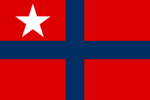 |
Gitreg | [[]] | [[]] | WIP |
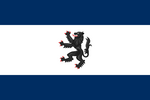 |
Gräniz | [[]] | [[]] | WIP |
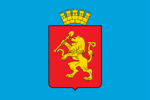 |
Haptbärg | [[]] | [[]] | WIP |
 |
Kapojvar | Kapojvar | [[]] | WIP |
 |
Länin | [[]] | [[]] | WIP |
| [[File:|150px]] | Nolkad | [[]] | [[]] | WIP |
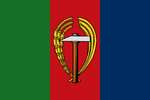 |
Nurad | [[]] | [[]] | WIP |
 |
Paysania | [[]] | [[]] | WIP |
| [[File:|150px]] | Salnol | [[]] | [[]] | WIP |
| [[File:|150px]] | Valdut | [[]] | [[]] | WIP |
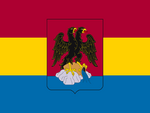 |
Yenülän | [[]] | [[]] | WIP |
Economy
The second turbulent revolution led to significant economic turmoil, though in recent years the Stedorian economy has slowly started to recover. The national currency is the Stedorian Könäd (KND). The GDP per capita stands at $14,103.
Demographics
The population of Stedoria is approximately 19 million. Of this number, ethnic Stedorians make up an overwhelming majority of the population at approximately 79 to 80% of the country's population. Stedorians originate from an intermixing between migrants from Dolchland in the 6th century and a native population isolate known as the Rafins. These migrants partially assimilated, such as by adopting their language which is still spoken today as modern Stedorian. Many other cultural aspects, however, were integrated into the Rafin people by the Dolch. Little is known by historians about the pre-Dolch Rafin people as they had no written records, and the Stedorian language would not see its first written forms until centuries later.
The country's second largest group are the Paysan people, making up approximately 12% of the population. The Paysans are highly concentrated in the mountainous north-east of the country. The Paysans originate from Lysian settlers that travelled inwards in the mid to late 18th century, where they were granted their own land within Stedoria to settle by the Stedorian king at the time, NAME. The Paysans would declare the independent Paysan Republic in 1852, and would be annexed back into Stedoria in 1871. The cultural contact with Stedorians and isolation from Lysians allowed them to develop their own, distinct culture.
The country's third largest group are Dolch people living in Stedoria, making up 4% of the population. They are overwhelmingly Paysan-Dolch, settlers from Dolchland invited into Paysania at the same time period as the Paysan migration into Stedoria. Like the Paysans, the live primarily in the north-east of the country. They speak a distinct dialect of Dolch, and have their own cultural customs seperate from the mainland Dolch.
Functional urban areas
WIP
Language
The primary language of Stedoria is Stedorian, which is spoken by approximately 90% of the country's population. It is taught in schools as a subject, and as a foreign language class in Paysan-speaking regions of Stedoria. The language derives from the Rafin people's language, with significant influences in vocabulary from Dolch and Lysian. Stedorian is one of the official languages of Stedoria.
The secondary language, Paysan, is a creole/descendant from Lysian, with Stedorian influences. It is partially intelligible to speakers of Lysian, although it contains some grammar and vocabulary aspects from Stedorian. It is recognised as one of Stedoria's official languages.
The third most common language is the Dolch, which is divided into two categories. Most ethnic Stedorians know the Dolch languages due to the country's pan-Dolchic stance, Dolch media and entertainment, instruction in school, and the country's history. Dolch is an recognised cultural language of Stedoria, though the country's constitution is unclear on what this means. The second category of Dolch is the dialect spoken by the Paysan-Dolch, which has influences of Lysian due to close contact. The language is only recently standardised, however, most Paysan-Dolch speak it, and can also speak standard Dolch and Stedorian.



